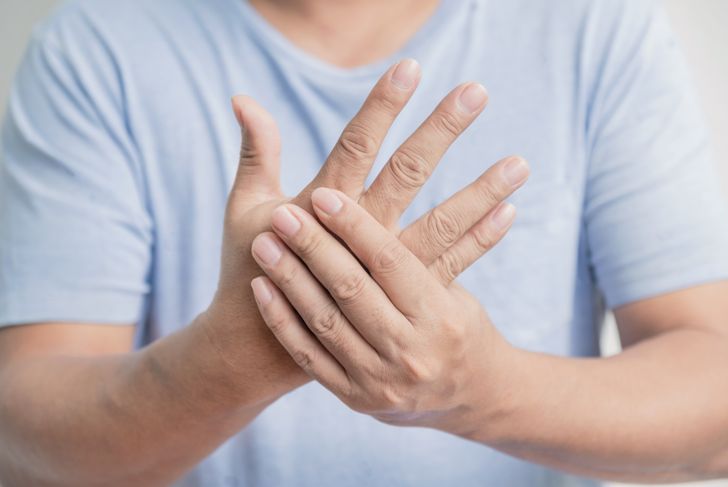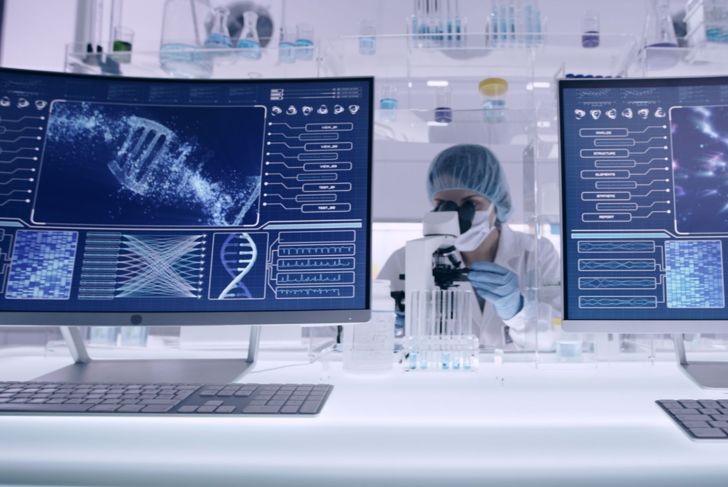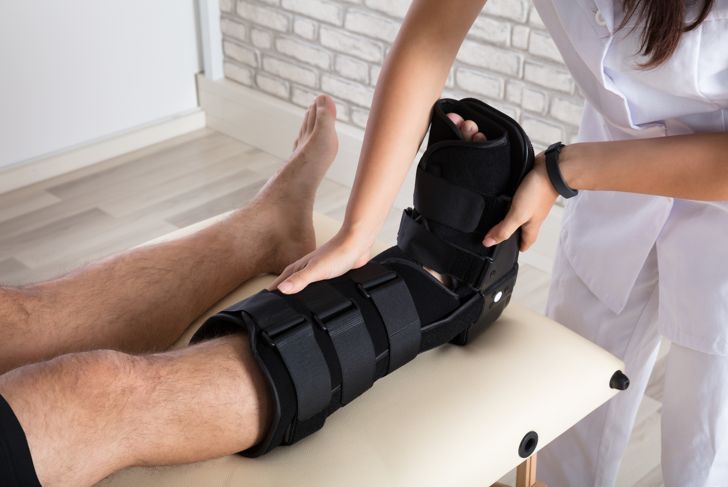Myotonic dystrophy is a form of muscular dystrophy, the one that most often begins in young adulthood. There are two types of the disease, but both are characterized by progressing muscle weakness and loss. The severity depends on the type and the individual, even differing significantly in members of the same family.
Inheritance and Frequency
Myotonic dystrophy affects about one in 8,000 people worldwide, although the type of disease varies depending on ethnicity and geographic location. In most populations, type 1 is the more common of the two.The condition is inherited. It follows an autosomal dominant pattern, meaning that one copy of the mutated gene (from just one parent) is enough to cause the disease.
Symptoms
Symptoms of myotonic dystrophy are similar between the two types. They often begin when the person is in their 20s or 30s, but they can appear at any age.Symptoms include progressive muscle stiffness, weakness, tightness, and wasting. Some people also develop have cataracts, type 2 diabetes, and irregular contractions in the heart, and men may experience infertility or balding.
Type 1
Myotonic dystrophy type 1 (DM1) affects the whole body, including smooth and skeletal muscle and the central nervous system, heart, eyes, and endocrine system.Mild type 1 DM1 causes mild sustained muscle contractions and cataracts, but the person has a normal lifespan. Classic type 1 DM1 causes muscle wasting, sustained muscle contractions, cataracts, and cardiac abnormalities, and people with it may have a shorter lifespan. Finally, congenital type 1 DM1 starts at birth, often with symptoms like severe weakness, intellectual disability, and suppressed breathing. These symptoms typically lead to early death.
Type 2
Myotonic dystrophy type 2 (DM2) has symptoms like the muscles being unable to relax after a muscle contraction, as well as muscle stiffness, pain, and weakness.Symptoms of DM2 may appear in childhood, but they more commonly begin in the person’s 30s or 40s. Muscle pain can be the first symptom and is often debilitating.
Type 1 vs Type 2
Myotonic dystrophy type 1 is more severe than type 2, and it may have a greater effect on lifespan. While both types cause muscle weakness, type 1 causes many other symptoms, too, including cataracts, difficulty swallowing, and problems with electrical conduction in the heart.People with type 1 may also develop respiratory complications as they get older.
Anticipation
Since myotonic dystrophy is passed down in an autosomal dominant pattern, people only need to get one mutated copy of the gene to get the disease.When someone with myotonic dystrophy has children, there is a 50/50 chance that the child will inherit the disease. This disease also has a genetic pattern called anticipation, meaning the symptoms of the disease begin earlier in life and tend to become more severe in subsequent generations.
Diagnosis
Myotonic dystrophy is often suspected after a physical exam that identifies the pattern of muscle wasting common to this disease. The only definitive test is a genetic test that can identify the specific genetic mutation that causes this disease.Other lab tests include electromyography (EMG), which tests the electrical activity of the muscles, a muscle biopsy to test if the muscle fibers are weak, and blood tests to check for elevated muscle enzymes.
Treatment
There is no cure for myotonic dystrophy, and treatment focuses on managing symptoms. People with this condition may need wheelchairs, ankle or foot braces, and other supportive devices. Pain management is an important part of treatment, though no pain medications are universally effective for people with myotonic dystrophy.Other interventions may include cataract removal, hormone replacement therapy for men with low testosterone, and management of abnormal heart rythm. Children with type 1 may need surgery to correct musculoskeletal deformities and special education support.
Management
People with myotonic dystrophy require ongoing monitoring to assess the progression of the disease. Some of these interventions may include annual evaluations from occupational therapists, physical therapists, and neurologists to assess muscle function, annual eye exams to look for cataracts, and annual EKGs and echocardiograms to monitor the condition of the heart.Myotonic dystrophy also requires regular monitoring because it can cause severe vitamin D deficiencies, thyroid problems, and diabetes. People with the condition can also be at risk for complications from general anesthesia.
Prognosis
The prognosis for myotonic dystrophy depends on the person and whether they have type 1 or 2, but overall, it is a progressive disease, and symptoms get worse as the person gets older.Some research shows that life expectancy is reduced for people with DM1 due to possible respiratory and cardiac problems, but the evidence is limited. People with mild symptoms may have a normal life expectancy. Many people with DM2 have a normal lifespan and retain their ability to walk into their 60s.

 Home
Home Health
Health Diet & Nutrition
Diet & Nutrition Living Well
Living Well More
More




















